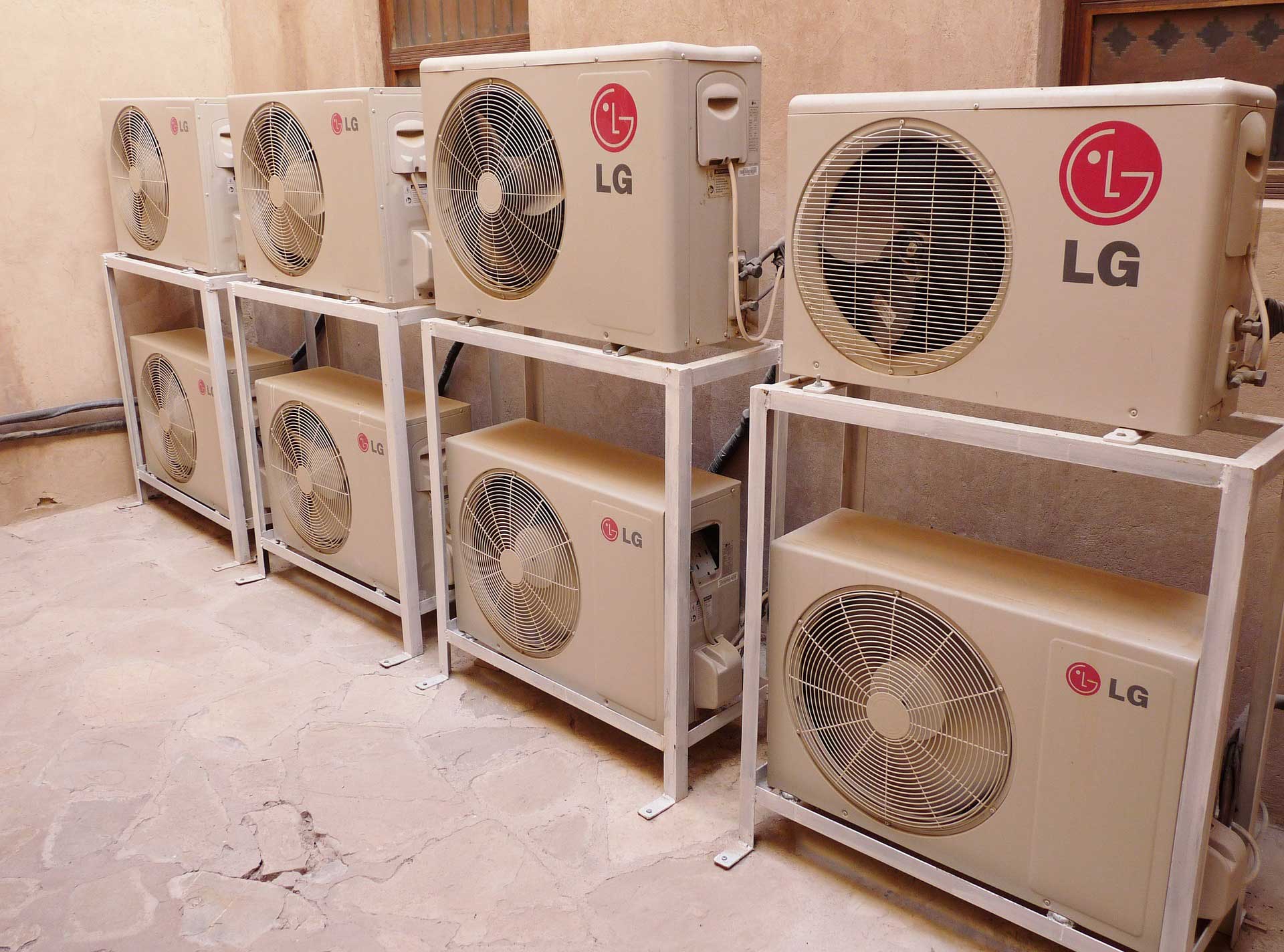The experience of buying a used aircon has a lot of similarities with purchasing second-hand cars; you’ll get a good deal if you know what to look for. On the flip side, you can easily end up with a lemon if you don’t have a clue on what to look for.
Here is a quick rundown of some of the questions to ask the seller so that you can gauge whether the deal is good or not:
- What is the model name?
- How old is the unit?
- How much is it vs. the original price?
- Is it still in good condition?
- How many times has it been repaired?
- What is its EER (energy efficiency ratio)?
- Is it still using R12 or R22 refrigerant?
In this article, we will better explain the factors to consider when buying a used air conditioner, and what to look for in a unit to help minimize the chance of you buying a lemon.
Know the make and model of the unit
Knowing the model name of the unit is important as you can use it to research the benchmark price of the model.
If you can physically inspect the item, check the rating label on the side of the unit (for split type models, these can be seen on the outdoor models). The brand and the model name can be seen from there.
Now that you know the model name, you should check its price from online sources or brochures. You should also ask around other people if they have good and bad experiences with that brand or model.
Determine the age of the unit
Now that you know the model name, you should also know the age of the unit. While you can give the seller the benefit of the doubt when he gives you the age of the air conditioner, you should also know when the model was manufactured to see whether the details checks out.
The best way to know when the unit was manufactured is through the serial number. Same as before, you can check the serial number (SN) on the rating label of the air conditioner. Serial numbers often contain the year that that particular unit has been manufactured. Most manufacturers put it in the front of the string, while others put it somewhere near the front, as
From there, you should compare it against the average lifespan of air conditioners, which according to the National Association of Home Builders (NAHB) is 10 years.
With that, you should be aware of the risks of buying an older air conditioner. Buying a 7 year old aircon is certainly more affordable, you should temper your expectation of its remaining usable life. Using the benchmark as a guide, you should expect at least 3 more years of use for the unit. That is, of course, unless it has a breakdown early on. Calculate whether your investment is worth the risk and the hassle of repairing and replacing parts.
In the next section, we will show you a technique to estimate the ideal price range of a used air conditioner.
Price range
There is no hard and fast rule when it comes to pricing a used aircon, but we will try to give you at least a benchmark to compare against to see if the deal is good or not. For this, we will use the same concept used in calculating a car’s depreciation rate.
A good rule of thumb to follow is that the value of the AC goes down by 15% the moment it leaves the appliance store. After that, the value goes down by 10%[1] of its original price every year. To illustrate this, we’ve created a table below, which assumes that you are buying a model with an original price of ₱29,998:
| Year | Rate | Price | vs. Original Price |
| – | – | ₱29,998.00 | 100% |
| 0 | 15.00% | ₱25,498.30 | 85% |
| 1 | 10.00% | ₱22,498.50 | 75% |
| 2 | 10.00% | ₱19,498.70 | 65% |
| 3 | 10.00% | ₱16,498.90 | 55% |
| 4 | 10.00% | ₱13,499.10 | 45% |
| 5 | 10.00% | ₱10,499.30 | 35% |
As you can see, the value of the air conditioner at the 3rd or 4th year should be around half of what the original price was. Of course, this is only a benchmark. The value of the aircon can be further depreciated if it is in a particularly bad condition. We will discuss this in the next section.
Is it in good condition?
As they say: it’s not the years, it’s the mileage. Most of the time, the condition of the item is the deal breaker when it comes to a used aircon.
If you can, you should physically inspect the unit to make sure that it is in good condition. We’ve made a list of the commonly seen flaws in used air conditioners, and we’ve divided it into acceptable (working condition – can be repaired/you can probably haggle the price down further) and unacceptable (compromised performance – requires extensive repairs/no-go zone)
Acceptable
- Minor dents and scratches
- Stains
- Broken plastic parts
Unacceptable
- Holes and corrosion
- Cooling problems
- Compressor issues
- Refrigerant leak
Service history
Always ask the seller if the air conditioner has been repaired at any point of its life or if they have been experiencing issues with it lately.
If the aircon has been repaired before, chances are it will experience the same issues as before in the future. Do not buy a used aircon that has been extensively repaired before as you will surely end up with a lemon.
Check its EER and power consumption
The energy efficiency ratio (EER) tells you how efficiently an air conditioner uses its power to cool its rated storage volume.
A high EER number means that that particular model is more energy-efficient, and therefore has a lower operating cost, while a low EEF means that the model is not efficient.
Older models tend to have low EER and high power consumption values, as they are not equipped with the technological improvements made on newer models.
As we’ve written before, the average power consumption of window air conditioners hover at 1.118 kW per hour. This means that if the power rate is at ₱9.744/kWh and that the AC will be used for 8 hours, then you should estimate that it will contribute at least ₱2,616 per month to your electricity bill.
If you want to learn more about the average EERs of window air conditioners, check out this article we’ve written,
Check its refrigerant
Back in the day, the most common refrigerant gas was Freon (R-12 and R-22). However, Freon is a CFC (chlorofluorocarbons) that damages the ozone layer. Freon has been phased out in lieu of more environment-friendly refrigerants because of this.
If the unit you’re planning to buy is still using R-12 or R-22, it is (1) Jurassic and thus it may be long past its usable life, and (2) it is bad for the environment. Please choose another item.
Conclusion
We hope that the information we’ve given was helpful in your search for a used aircon. Always keep this pointers in mind to avoid bad deals and lemons.

Miguel Mores worked for 5 years as a member of the product management team for a home appliance company in the Philippines. He started 101appliance to answer the most common customer questions that he has encountered during his time in the industry. He now works in the digital marketing field and manages a small online bookstore on the side.


Good day!
Thanks alot for a clear and expert information in your site. It really helps me alot to get a correct information. It is very difficult to get correct information when buying appliances through the stores or electrician. More often you get a false information about stuff specially when it comes to more logical information.
Btw, i’m scorching tru google to find any information about generator. I hope u can do reviews or blog about generators too. It is one of the thing we buy in Philippines but only few information about it. I am planning to buy 8kva generator but i get confuse of simply how much load I can put on my generator because they cannot explain how it is calculated. They just tell few appliances u can have and thats it. If u ask how come, they cannot answer questions and it frustrate me. I hope u can do blog with generators one day. thanks alot.